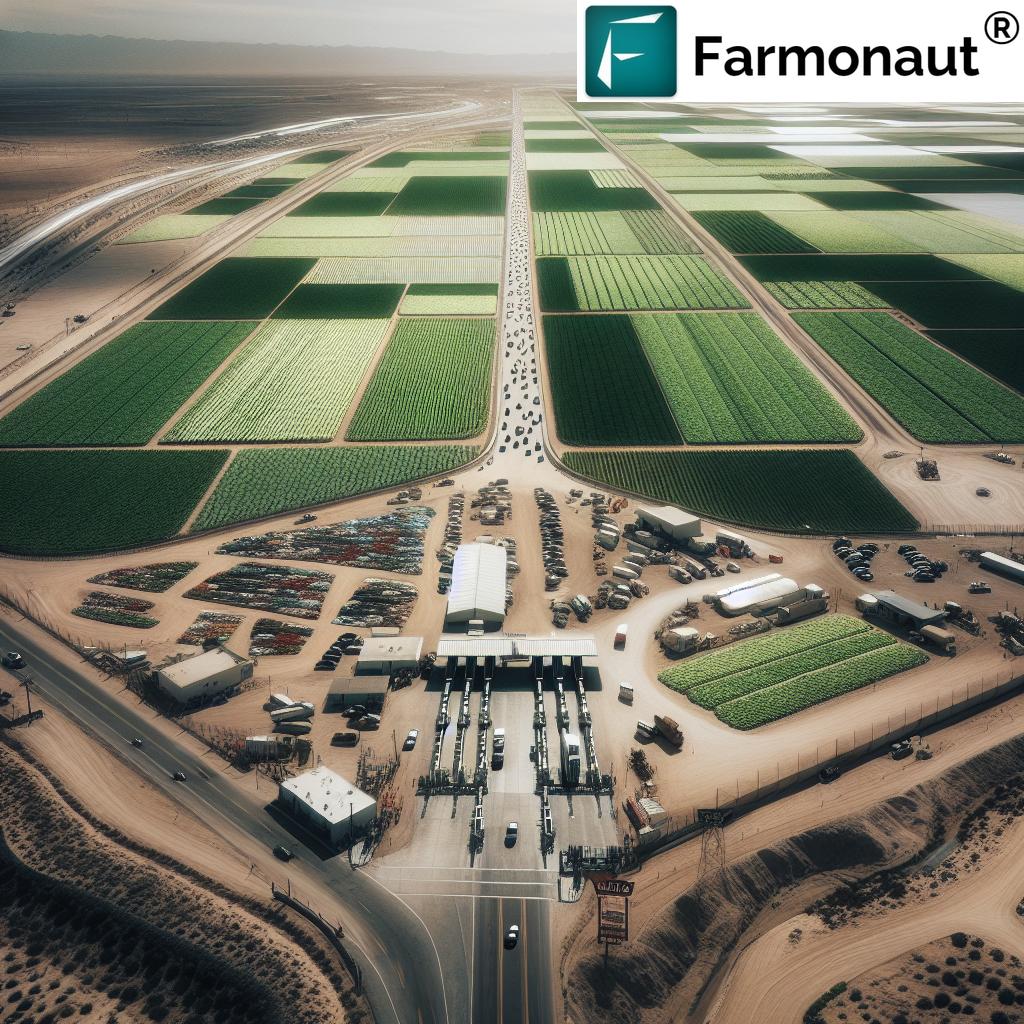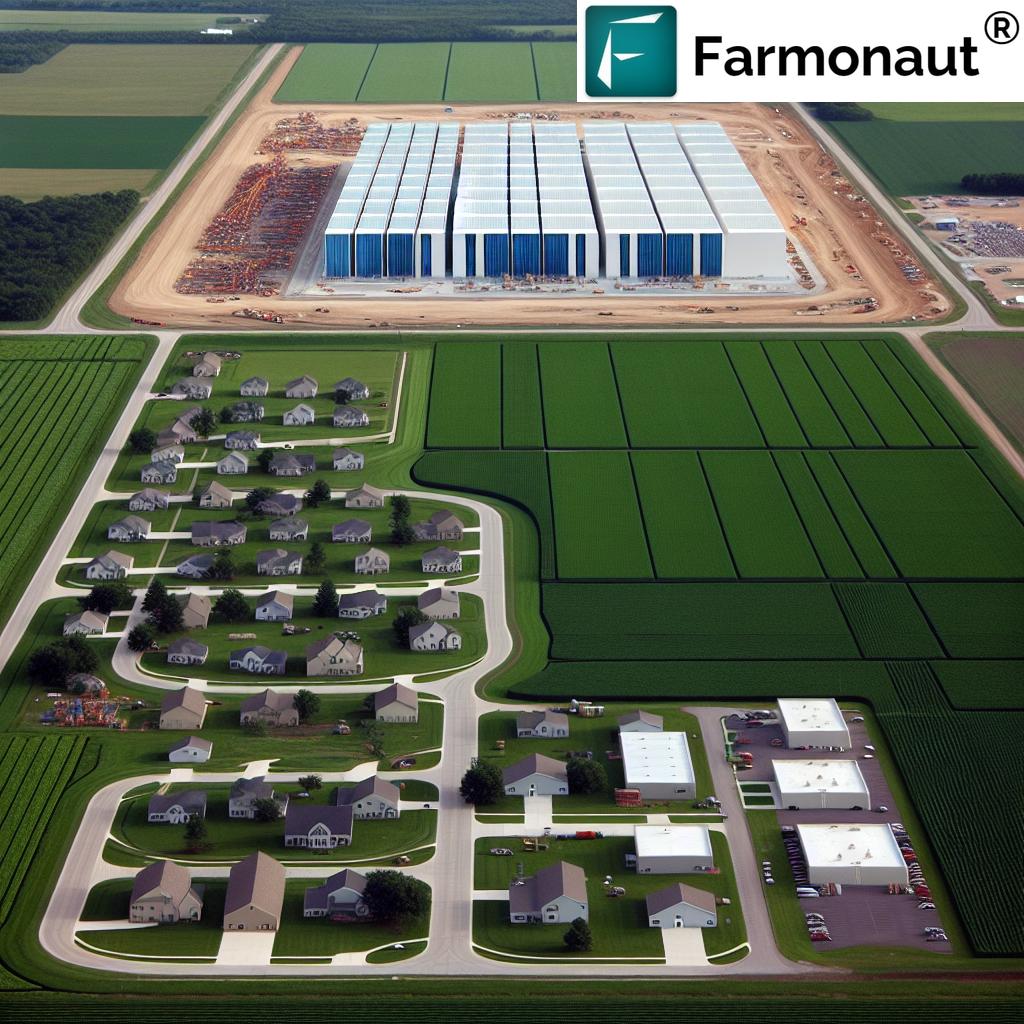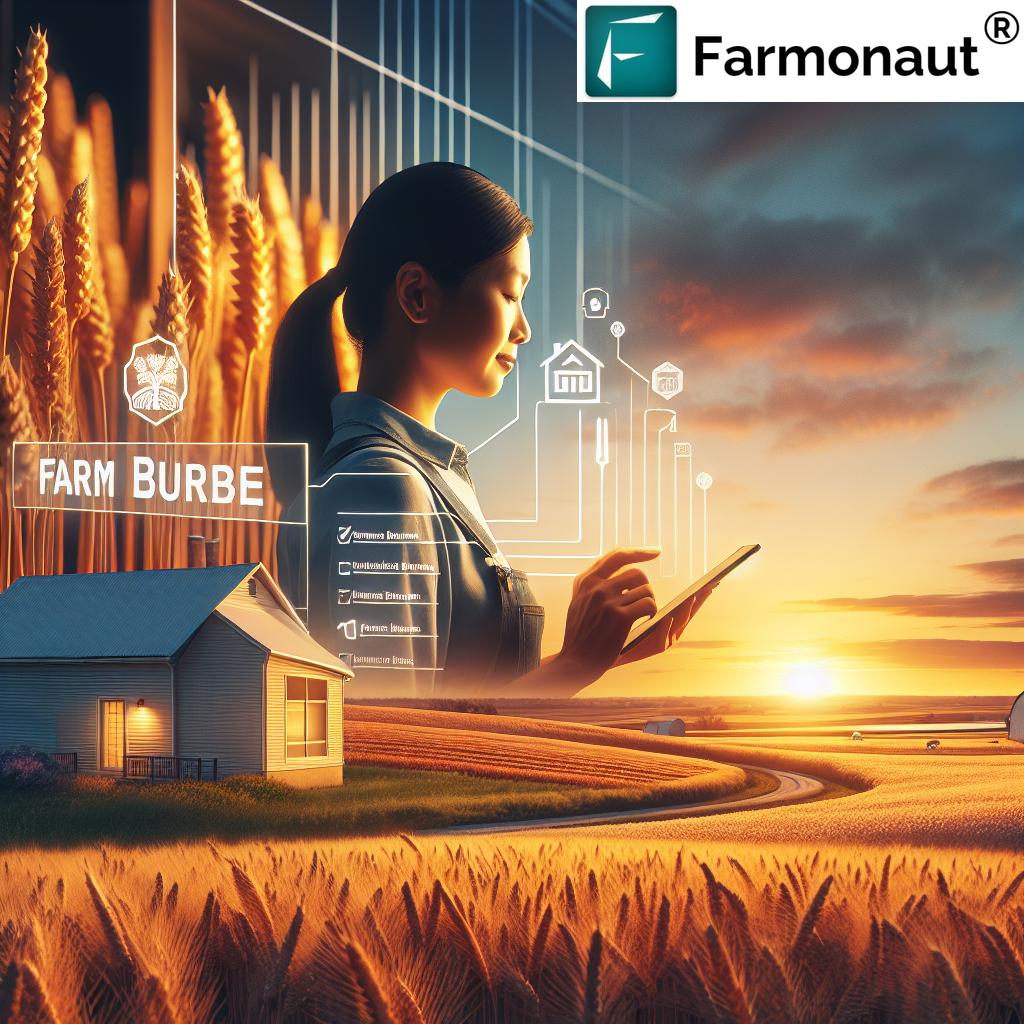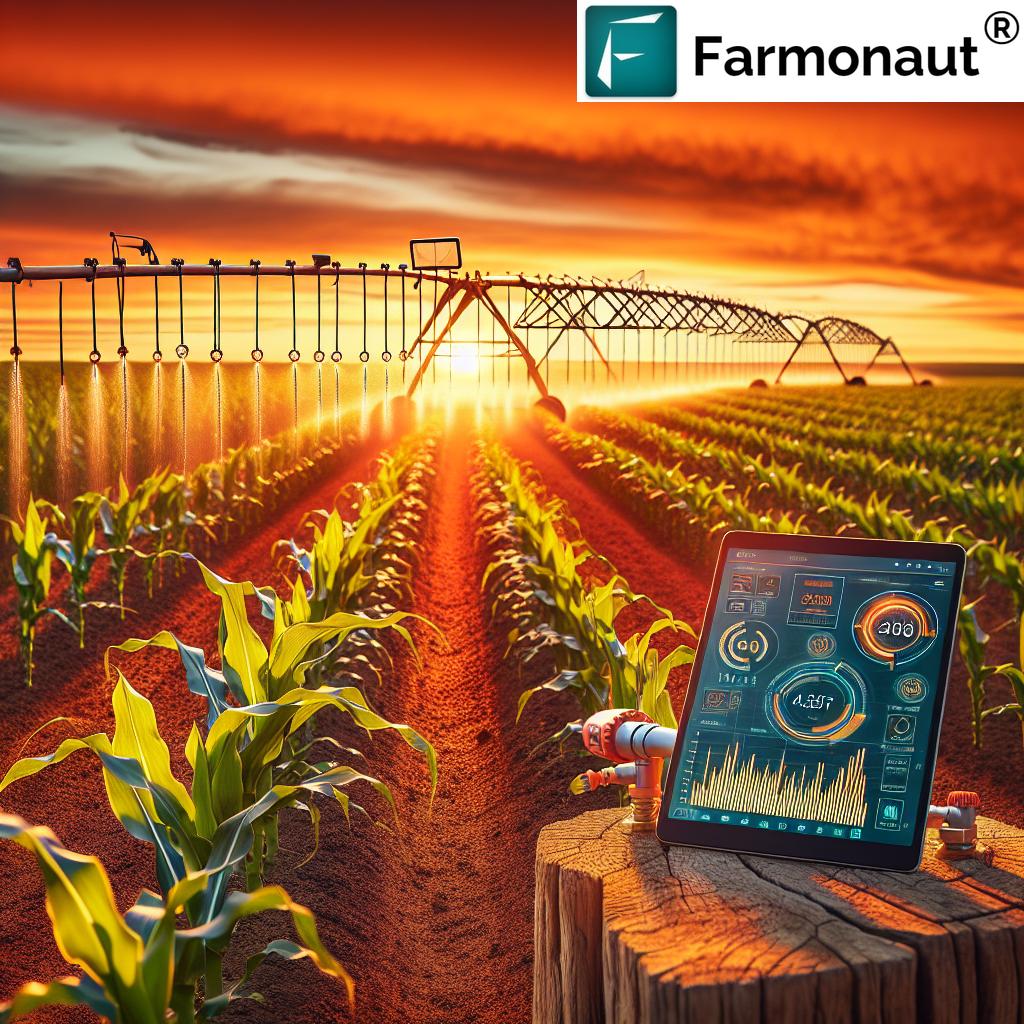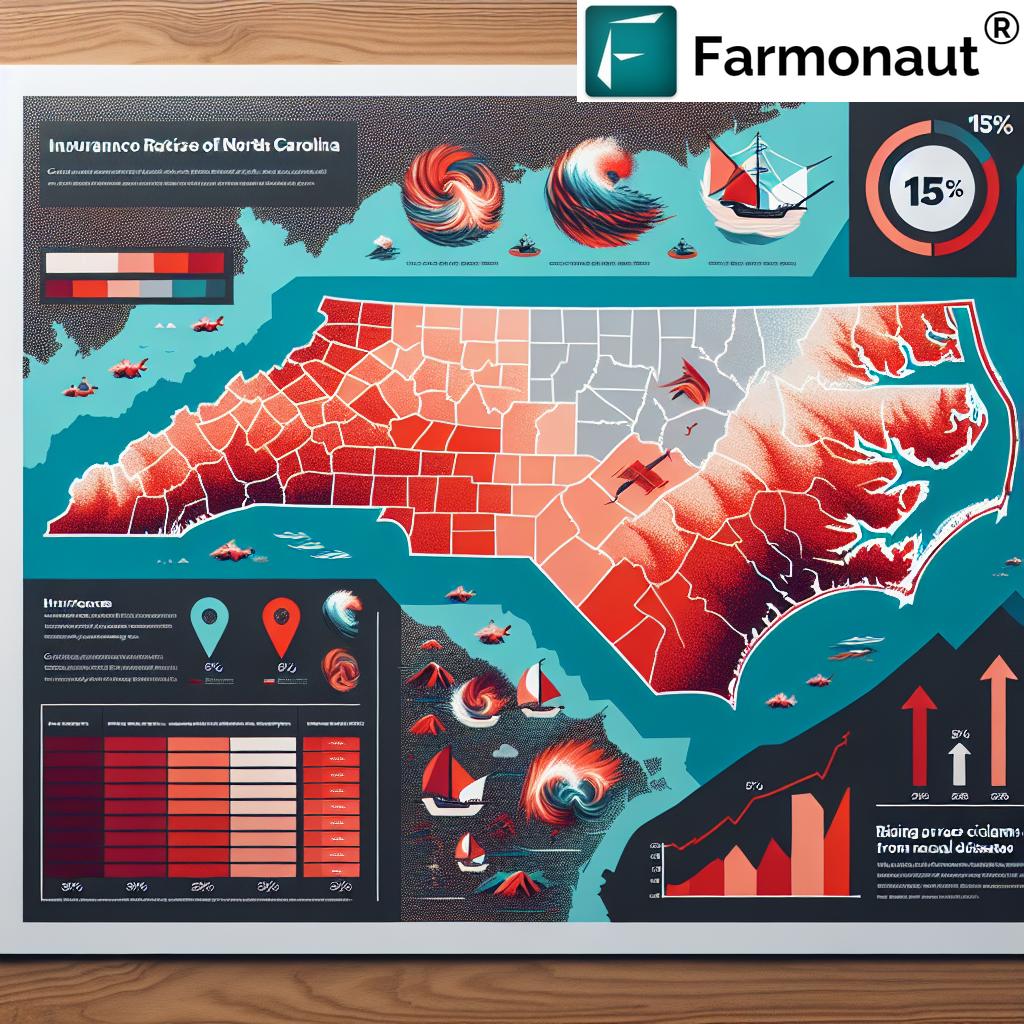Consumer Food Insights: Analyzing Grocery Price Stress and Tariff Impact in West Lafayette
“53% of consumers believe the government has moderate influence over food prices, according to the Consumer Food Insights Report.”
We, at Farmonaut, understand the importance of staying informed about consumer trends and economic factors affecting the food industry. In this comprehensive analysis, we’ll delve into the latest Consumer Food Insights Report, which sheds light on grocery price stress, tariff impacts, and consumer behavior in West Lafayette and beyond. As experts in agricultural technology and sustainability, we believe this information is crucial for farmers, policymakers, and consumers alike.
Understanding Grocery Price Stress
The Consumer Food Insights Report, conducted by Purdue University’s Center for Food Demand Analysis and Sustainability, reveals intriguing patterns in consumer attitudes towards grocery prices. Let’s break down the key findings:
- The average grocery price stress level is 5.1 on a scale of 0 (no stress) to 10 (extreme stress).
- Low- and middle-income households report higher stress levels, averaging close to 6.
- High-income earners experience less stress, with an average rating around 4.
These findings highlight the disparity in how different income groups perceive and experience food costs. As we navigate through uncertain economic times, it’s crucial to understand these stress levels and their potential impact on consumer behavior and food security.
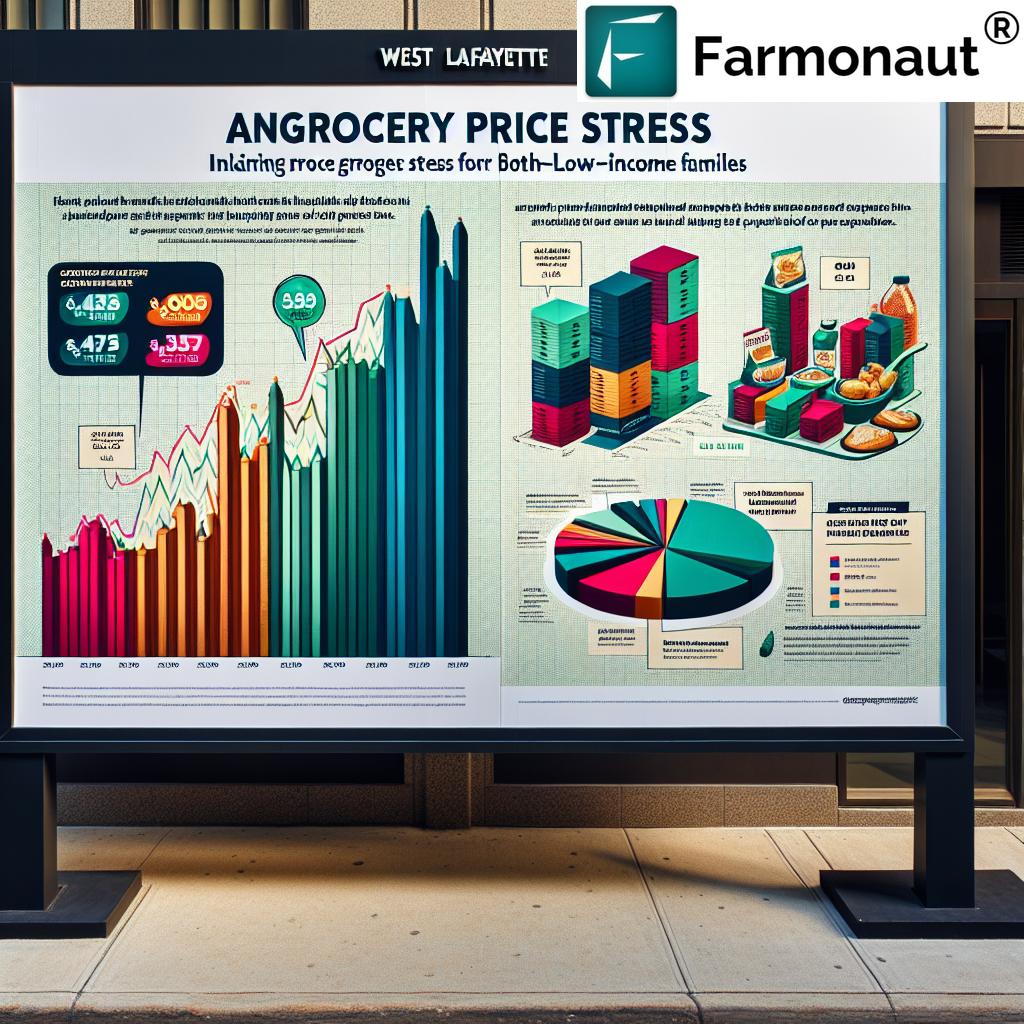
Tariffs and Their Impact on Food Prices
The report delves into consumer understanding of tariff policies and their perceived impact on food prices. Here’s what we’ve learned:
- 80% of consumers are at least somewhat familiar with the concept of tariffs.
- On average, consumers believe the government has a moderate influence (6.9 on a 0-10 scale) over food prices.
- 72% of consumers think tariffs raise prices to some degree.
Interestingly, political affiliation plays a role in how consumers perceive the benefits and costs of tariffs:
- 42% of Democrats say there are no benefits to tariffs, compared to 31% of independents and 21% of Republicans.
- 63% of Democratic consumers mentioned cost of living and price increases as potential costs of tariffs.
- More than half of Democrats believe tariffs increase prices significantly, compared to 35% of independents and 22% of Republicans.
These findings underscore the complex relationship between trade policies, consumer perceptions, and food prices. As agricultural technology experts, we at Farmonaut recognize the importance of understanding these dynamics to better serve our farming community.
Diet Quality and Well-being
The Consumer Food Insights Report introduces a new section on diet quality, using the Mini-EAT Tool to assess consumer eating habits. Here’s what we’ve discovered:
- The average Mini-EAT score in January was 61.9, classifying as an “intermediate” diet quality.
- Scores below 61 are considered “unhealthy,” indicating room for improvement in American diets.
- Two-thirds of American adults rate their diet as 7-10 (thriving) on a scale from 0 to 10.
As agricultural technology providers, we at Farmonaut believe that understanding diet quality trends can help farmers make informed decisions about crop selection and production methods to meet consumer demands for healthier food options.
SNAP Benefits and Food Insecurity
The report also explores the role of Supplemental Nutrition Assistance Program (SNAP) benefits in addressing food insecurity:
- SNAP households rate their diet well-being comparably to non-SNAP households.
- However, a larger share of SNAP consumers fall into the “suffering” category (0-4 out of 10) on the diet well-being index.
- Food insecurity is notably higher among SNAP households compared to non-SNAP households.
These findings highlight the complex relationship between food assistance programs and household food security. While SNAP benefits play a crucial role in alleviating food insecurity, there’s still work to be done to bridge the gap between SNAP and non-SNAP households.
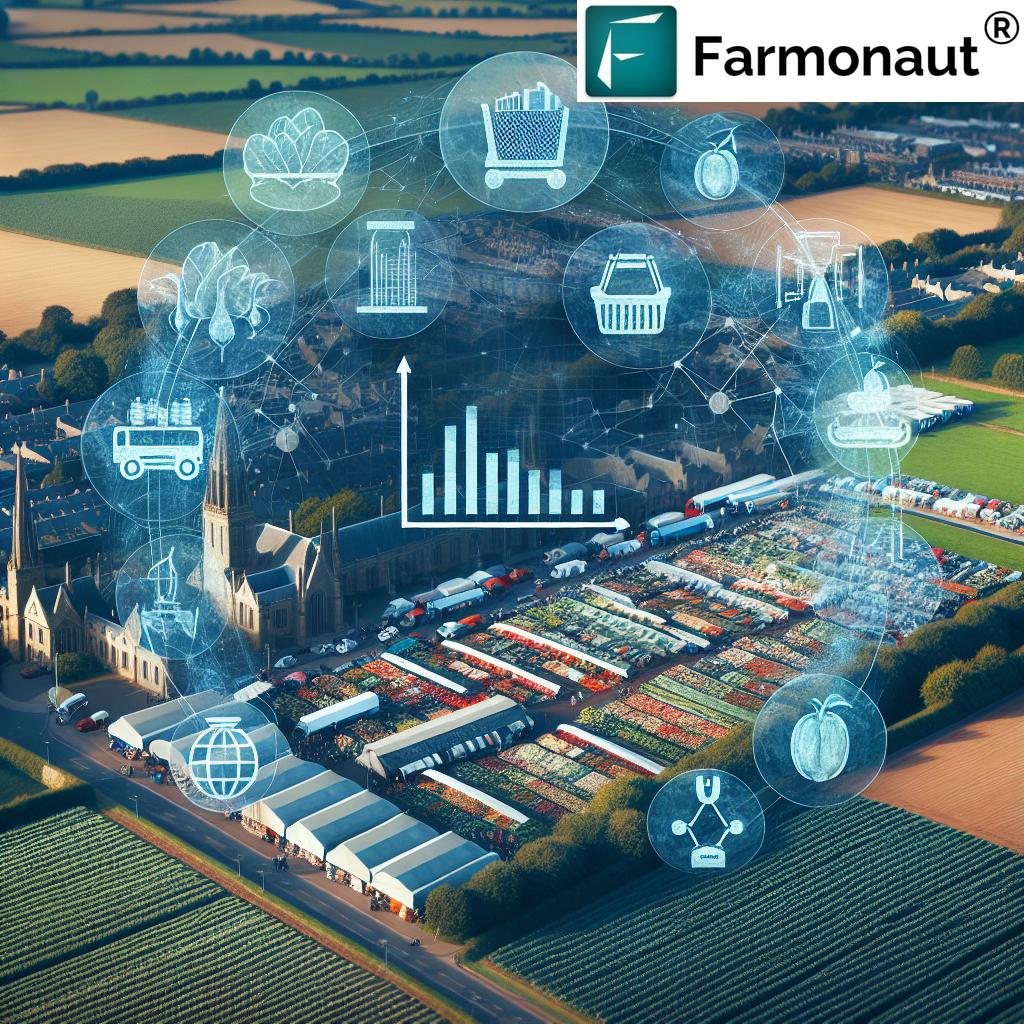
Shopping Habits and Food Inflation
The report reveals interesting trends in consumer shopping habits and perceptions of food inflation:
- SNAP households choose generic over name-brand food items more often (3.6 on a 1-5 scale) than non-SNAP consumers (3.2).
- SNAP households report checking labels more frequently.
- Consumer estimates of food inflation over the past 12 months dropped to 5.2%.
- Expectations about future food inflation decreased to 2.6%, just above the consumer price index food inflation rate of 2.5%.
These insights into consumer behavior and inflation expectations are valuable for farmers and policymakers alike. At Farmonaut, we believe that understanding these trends can help agricultural producers make informed decisions about crop planning and marketing strategies.
“The study reveals that low- and middle-income households experience higher grocery price stress than other income groups.”
Implications for Agricultural Technology
As leaders in agricultural technology, we at Farmonaut see several implications from this Consumer Food Insights Report:
- Precision Agriculture: With consumers increasingly concerned about food prices, farmers can leverage precision agriculture tools to optimize crop yields and reduce production costs. Our satellite-based crop health monitoring system can help farmers make data-driven decisions to improve efficiency.
- Sustainable Farming Practices: The growing awareness of food quality and sustainability among consumers highlights the need for environmentally friendly farming methods. Our AI-based advisory system, Jeevn AI, can guide farmers in adopting sustainable practices that align with consumer preferences.
- Supply Chain Transparency: With consumers showing interest in the factors affecting food prices, including tariffs, there’s a growing need for transparency in the food supply chain. Our blockchain-based traceability solutions can help build consumer trust by providing verifiable information about food origins and production methods.
- Resource Management: As food insecurity remains a concern, especially among SNAP households, efficient resource management in agriculture becomes crucial. Our fleet and resource management tools can help agribusinesses optimize their operations and potentially contribute to more affordable food options.
To learn more about how Farmonaut’s advanced agricultural technology can help address these challenges, visit our web app or explore our API for developers.
| Income Group | Stress Level | Notable Factors |
|---|---|---|
| Low-income | High | Limited budget, higher percentage of income spent on food |
| Middle-income | Moderate to High | Balancing food costs with other expenses, price sensitivity |
| High-income | Low | Greater financial flexibility, less impacted by price fluctuations |
The Role of Government and Policy
The Consumer Food Insights Report highlights the complex relationship between government policies, consumer perceptions, and food prices. Here are some key takeaways:
- Consumers believe the government has a moderate influence on food prices, with an average rating of 6.9 on a 0-10 scale.
- This belief is largely bipartisan, indicating a shared understanding across political affiliations.
- The impact of tariffs on food prices is a contentious issue, with varying opinions based on political leanings.
These findings underscore the importance of clear communication and evidence-based policymaking in the food and agriculture sector. As agricultural technology providers, we at Farmonaut believe that data-driven insights can play a crucial role in informing policy decisions and improving consumer understanding of food economics.
The Future of Food: Trends and Predictions
Based on the insights from the Consumer Food Insights Report, we can make some predictions about the future of food consumption and production:
- Increased Focus on Affordability: With low- and middle-income households experiencing higher grocery price stress, we may see a growing demand for affordable, nutritious food options.
- Diet Quality Improvement: As awareness of diet quality grows, consumers may seek out healthier food options, potentially driving changes in agricultural production and food processing.
- Technology-Driven Agriculture: The need for efficiency and sustainability in food production may accelerate the adoption of agricultural technologies like those offered by Farmonaut.
- Supply Chain Transparency: Consumer interest in the factors affecting food prices may drive demand for more transparent supply chains, potentially benefiting technologies like blockchain-based traceability.
- Policy Evolution: As understanding of the complex relationships between government policies and food prices grows, we may see more nuanced approaches to agricultural and trade policies.
At Farmonaut, we’re committed to staying at the forefront of these trends, providing farmers and agribusinesses with the tools they need to thrive in an evolving food landscape. Explore our API Developer Docs to see how our technology can support your agricultural operations.
Conclusion: Navigating the Complex Food Landscape
The Consumer Food Insights Report from Purdue University’s Center for Food Demand Analysis and Sustainability provides valuable insights into the complex relationships between consumer behavior, economic factors, and food policies. As we’ve explored in this analysis, issues such as grocery price stress, tariff impacts, diet quality, and food insecurity are interconnected and have far-reaching implications for the entire food system.
At Farmonaut, we believe that technology has a crucial role to play in addressing these challenges. Our suite of agricultural technology solutions, from satellite-based crop monitoring to AI-driven advisory systems, can help farmers and agribusinesses navigate this complex landscape more effectively. By leveraging data-driven insights and advanced technologies, we can work towards a more sustainable, efficient, and equitable food system.
As we look to the future, it’s clear that collaboration between farmers, policymakers, researchers, and technology providers will be essential in addressing the challenges highlighted in this report. By working together and leveraging the power of agricultural technology, we can strive towards a future where food is affordable, accessible, and sustainable for all.
FAQs
- What is the Consumer Food Insights Report?
The Consumer Food Insights Report is a survey-based assessment conducted by Purdue University’s Center for Food Demand Analysis and Sustainability. It evaluates food spending, consumer satisfaction, support for agricultural policies, and trust in information sources. - How does income level affect grocery price stress?
According to the report, low- and middle-income households (earning less than $75,000 annually) experience higher grocery price stress, with average ratings close to 6 on a 0-10 scale. High-income earners report lower stress levels, averaging around 4. - What do consumers think about the impact of tariffs on food prices?
72% of consumers believe tariffs raise food prices to some degree. However, opinions vary based on political affiliation, with Democrats more likely to believe tariffs significantly increase prices compared to Republicans and independents. - How does the report measure diet quality?
The report uses the Mini-EAT Tool, a nine-question diet assessment that asks about consumption frequency of various food groups. The average score of 61.9 in January translates to an “intermediate” diet quality classification. - What role do SNAP benefits play in addressing food insecurity?
While SNAP benefits help alleviate food insecurity for low-income households, the report shows that food insecurity remains higher among SNAP households compared to non-SNAP households. This suggests that while SNAP is crucial, it may not fully bridge the gap in food security.
For more information on how Farmonaut’s agricultural technology solutions can help address these challenges, explore our mobile apps:
Earn With Farmonaut
Earn 20% recurring commission with Farmonaut’s affiliate program by sharing your promo code and helping farmers save 10%. Onboard 10 Elite farmers monthly to earn a minimum of $148,000 annually—start now and grow your income!
For more information about our affiliate program, visit Farmonaut’s Affiliate Program.
Farmonaut Subscriptions
By leveraging Farmonaut’s advanced agricultural technology solutions, farmers and agribusinesses can navigate the complex food landscape more effectively, contributing to a more sustainable and efficient food system for all.




